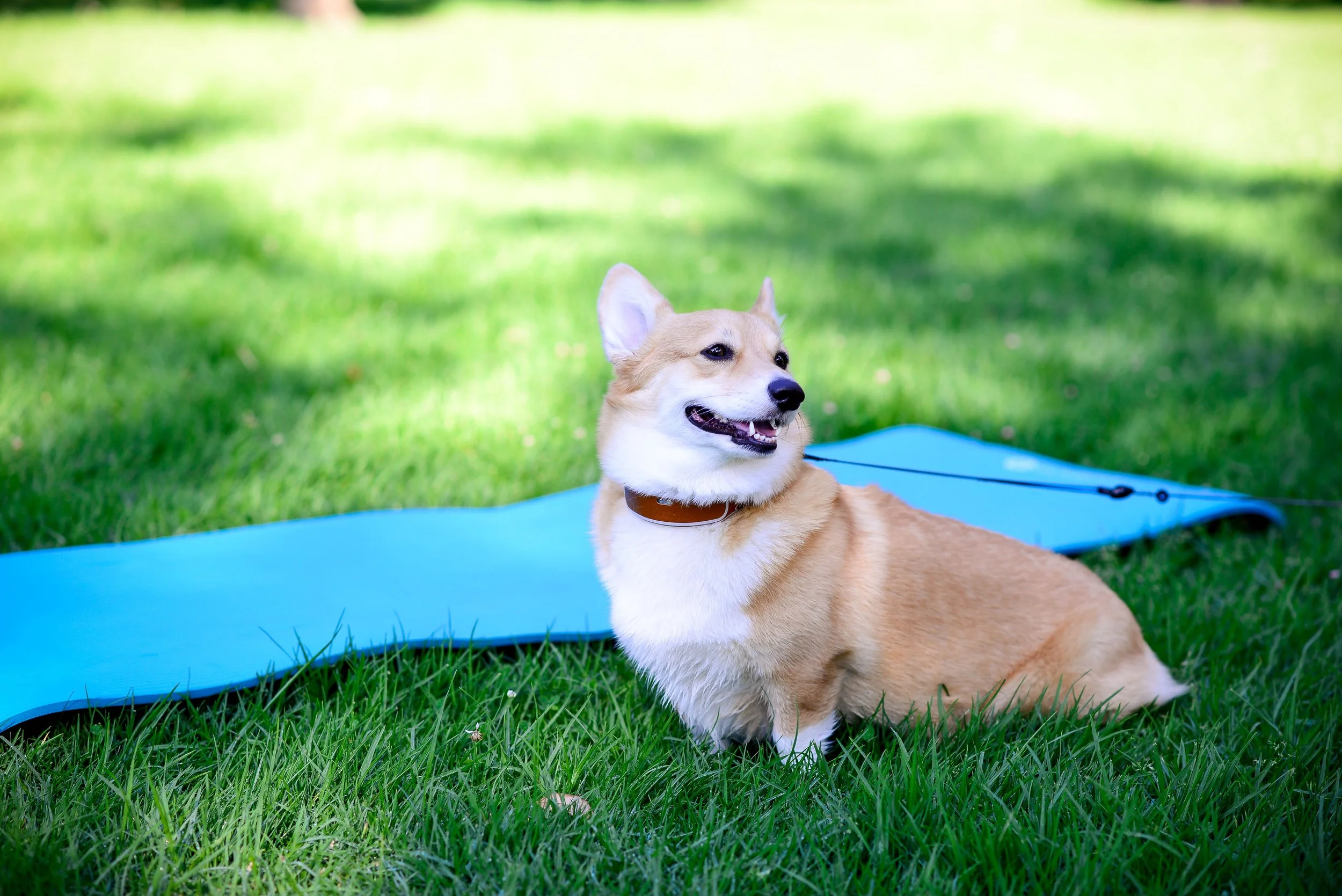Canine Body Language
Dog communication is a combination of body language and sounds like barking, growling, and so on. We, as humans, aren’t able to use exactly the same style of communication as our dogs but we can learn to read their body language and better understand what they are thinking.
When looking at your dog, watch their whole body – ears, mouth, tail, and all that’s in between. No one part of your dog can tell you everything, but together they give a picture of your dog’s state of mind.
Is their body relaxed and loose? Tense and still?
Are their ears up, back, or sideways?
Is their tail up or tucked? Moving or still? Wagging loosely or fast and stiff?
Is their mouth open or closed? Are they panting or yawning? Showing their teeth?
Is their fur laying flat or standing up?
Below is a review of some important emotional states in your dog. This is meant to provide a general sense of what to look for and lists just a few of the important signs that most dogs use. However, every dog is an individual and may use a slightly different combination of body language to communicate. You’ll also notice that some behaviors (like a wagging tail or mouthing) can mean different things when taken in context. Take time to watch your dog and you will begin to see what they’re telling you.
Signs A Dog Is...
Happy, Relaxed, Confident
Soft, relaxed body
Mouth softly open, only panting if active
Tail loose and wagging in large motions
Staying nearby, seeking contact
What to Do in the Moment:
Enjoy it!
Interact with petting, talking, and play.
Train new skills while they are ready to learn.
Watch for any changes; just because a dog is relaxed now doesn’t mean they can’t get overly tired, nervous, or uncomfortable as time goes on.
Playful
Loose body
Ears forward
“Play bow” - lowering front legs to ground
Quick starts and stops in movements
Approaching and retreating
Mouthing
Barking
What to Do in the Moment:
If you like your dog’s playful behavior, reward them by playing back.
If your dog’s play is inappropriate (such as mouthing or demand barking), don’t reward them by playing or continuing to play. Instead, briefly stop the game and give them a moment to calm down. Then use a toy to start the game again.
If your dog’s play is inappropriate (such as mouthing or demand barking), don’t reward them by playing or continuing to play. Instead, briefly stop the game and give them a moment to calm down. Then use a toy to start the game again.
If your dog is trying to play with another dog, ensure both dogs are enjoying the play by gently interrupting them and seeing if they both want to return to the game.
Overwhelmed, Nervous, or Uncomfortable
Yawning
Panting without exercise
Body tense
Ducking head or body
Leaning or looking away
Licking lips
Mouthing at handling
Fearful
Tail tucked under body
Whale eye (showing whites of eyes)
Holding very still
Moving away
Showing teeth
Growling, snarling, snapping, or biting
What to Do in the Moment:
Respect your dog’s first warning signs so they don’t escalate to biting.
Move away from the dog and stop trying to interact with them.
Remove your dog from the situation that is stressing them out. Continuing to force an interaction won’t teach your dog to feel safe or “behave.”
Alert, Ready to React
Ears up and/or forward
Staring
Tail up and/or stiff
Body tense
Fur standing up
High Alert
Stiff tail, small/fast wag
Possibly barking, possibly silent
Lunging
Redirecting energy by mouthing or biting nearby things/people
What to Do in the Moment:
Your dog may be ready to chase something, to react to a strange dog, or to lunge at someone. Use your voice, a treat, or a toy to get their attention back to you.
Remove your dog from any situation that puts them on “high alert” as this is when they may bark, lunge, or even bite.
If it isn’t your dog, move away from an alert dog to prevent a defensive response.
Guarding a Valued Item
Still, tense body
Hard staring
Body tense
Whale eye
Moving away with item
Growling or snarling
Air snapping or biting
What to Do in the Moment:
Stop reaching for the item
Move children and other pets away
If you really need to remove the item, toss extra special treats or toys to your dog to encourage them to move away from it. Don’t reach for the item again until your dog has fully moved away.
This material was written in collaboration with dog behavior consultant Jessica Char.
Learn more at www.CanineEngineering.com






